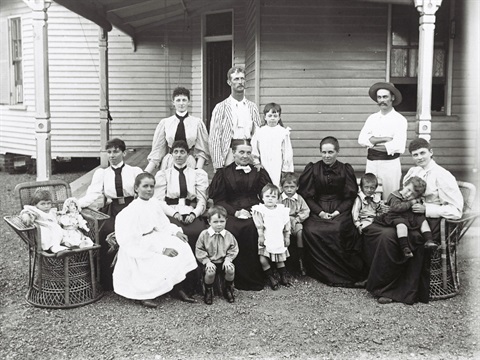Genealogy at home: Assisted Immigration
Published on 24 March 2020

It is important to find a point of entry for non indigenous ancestors, as this will tell you where and when you need to start looking for overseas records.
You may be fortunate and have no problem in discovering the entry of your first arrivals in Australia. Sometimes the full death certificate for a person may provide clues to the year of arrival, parents' names and place of origin, thus enabling you to commence research overseas. However, these vital pieces of information only began appearing on death certificates throughout Australia when official registration began in 1856. The date of a marriage in Australia or date of birth of the first Australian born child could narrow down the arrival period and facilitate a search in shipping records.
Quite often, however, you will find no clues as to how your ancestor arrived. Shipping records are perhaps the most inaccessible of all genealogy records, and finding ancesters in these can sometimes be difficult.
People came to the colonies in different ways. They may have come as convicts, members of the military, assisted immigrants, or free paying passengers. They may have been merchant seamen who jumped ship in Australian ports.
In the early days of the Australian colonies (1828 - 1896), the British government encouraged ordinary people and families to come out and help settle the country. There were many schemes which offered to pay full or part fare for immigrants and assist them to find work when they arrived. These schemes attracted huge numbers of people who were keen to find a better life in a new country with new opportunity. Known as assisted or bounty immigrants - because their way was being paid by the government, prospective employer or private sponsor - accurate and detailed records were kept.
These records are available for searching on Ancestry.com and Findmypast for each state, and give details like age, occupation, native place and religion. NSW Immigration Deposit Journals, 1853-1900 on Ancestry give details of sponsors of assisted immigrants and amounts paid. This information can be very useful in tracking your ancestors after they arried.
Indexes to assisted immigrants can also be found on the various State Archives websites. These are free to search, but do not lead to the full record.
Other record sets on Ancestry are Wives and families of convicts on bounty ships (1849-55), indexes to members of the Family Colonization Loan Society (1854-57) and Passenger Lists of the Family Colonization Loan Society (1854-55).
TIP: Don’t forget to check in South Australia for your German ancestors. German settlement in Australia began in large numbers in 1838, with the arrival of immigrants from Prussia escaping persecution in their own countries.